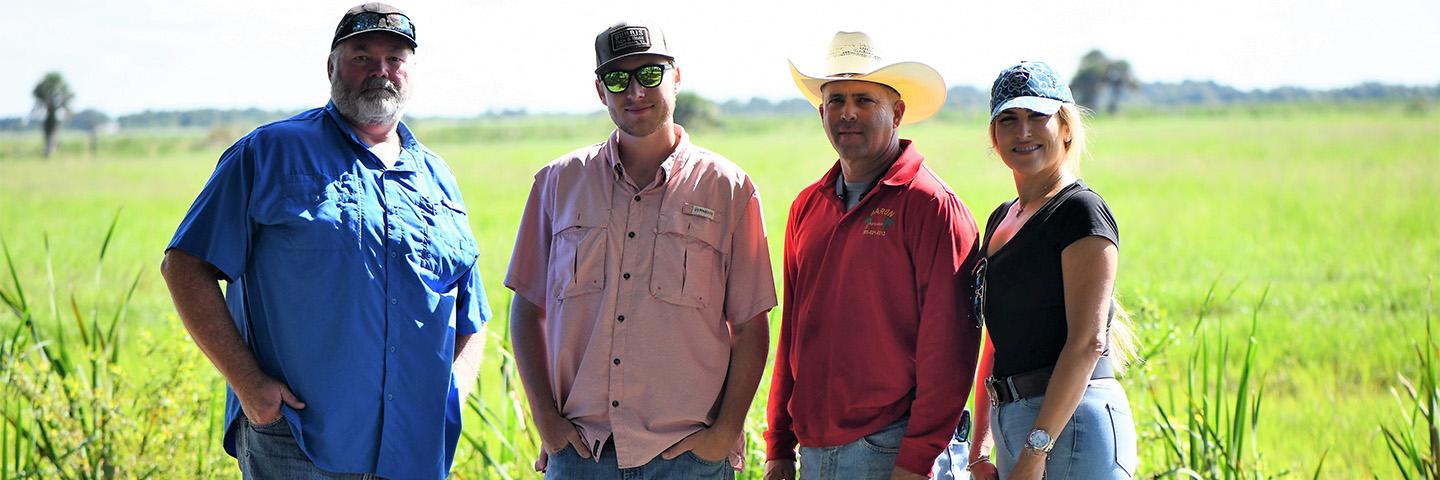USDA Unveils Efforts to Streamline Agricultural Conservation Easement Program

The U. S. Department of Agriculture (USDA) is streamlining its Agricultural Conservation Easement Program (ACEP) to ultimately better help agricultural producers and private landowners conserve wetlands, productive farmlands and at-risk grasslands.
WASHINGTON, May 9, 2023 - The U. S. Department of Agriculture (USDA) is streamlining its Agricultural Conservation Easement Program (ACEP) to ultimately better help agricultural producers and private landowners conserve wetlands, productive farmlands and at-risk grasslands. USDA’s Natural Resources Conservation Service (NRCS) is rolling out several improvements to this important program, which has more than 5 million acres of land enrolled, in response to feedback from producers, landowners and conservation partners.
Specifically, NRCS is updating its processes around appraisals, land surveys, as well as certifying eligible entities who help NRCS and producers enroll land into easements. These changes are for ACEP Agricultural Land Easements (ALE) as well as Wetland Reserve Easements (WRE).
“NRCS’ changes to the Agricultural Conservation Easement Program will help us more efficiently and effectively work with producers and partners to protect lands in conservation easements,” said NRCS Chief Terry Cosby. “We want our program to be more responsive to our customer needs so that ACEP continues to be a valuable and effective conservation tool that provides long-term protection of our nation’s farmland and wetland resources.”
NRCS is streamlining ACEP appraisals, land surveys, as well as certifying eligible entities who help NRCS and producers enroll land into easements.
Key program changes include:
- Appraisals for ALE: The threshold for national review of ALE appraisals is now $3 million, raised from $1 million. NRCS raised the threshold to align program requirements with increased land values, enabling the agency to better target staff resources and speed up implementation. Appraisals help ensure cost-effective and appropriate use of federal funds that are contributed to a conservation partner for their purchase of the ALE from the farmer or rancher.
- Land Surveys for WRE: NRCS plans to encourage procurement of land surveys earlier in the acquisition timeline, such as when an application has been tentatively selected for a WRE. These surveys help with locating land boundaries, which is needed to purchase and manage the easement. NRCS is also increasing its use of partnerships to assist with acquiring the land surveys and has simplified the review process for producer-acquired land surveys. This will speed up the time it takes producers and landowners to enroll.
- Certification of Entities for ALE: For ALE, NRCS works with eligible entities, such as American Indian tribes, state and local governments and non-governmental organizations, to conserve prime farmland and at-risk grasslands. NRCS is working to expand the number of entities by launching a certification initiative to proactively notify potentially eligible entities that they qualify for administrative flexibilities. Certified entities have greater independence and less oversight in their purchase of easements funded under ALE. Information for entities on how to get certified is available on the ALE webpage.
These improvements are the first step in an ongoing effort to streamline ACEP as well as other NRCS conservation programs to ensure that they are easier and more convenient to utilize, and it will strengthen implementation of the Inflation Reduction Act (IRA), which included $1.4 billion in additional funding for ACEP over five years.
More Information
In total, the IRA provides $19.5 billion over five years to support USDA’s oversubscribed conservation programs like ACEP. The IRA, part of President Biden’s Investing in America agenda, represents the single largest investment in climate and clean energy solutions in American history.
ACEP is administered by NRCS and aids landowners and eligible entities with conserving, restoring, and protecting wetlands, productive agricultural lands, and grasslands at risk to conversion to non-grassland uses. Healthy wetlands, grasslands and farmlands sequester carbon and provide many other natural resource benefits.
NRCS accepts producer applications for its conservation programs – including ACEP – year-round. Producers interested in easements should contact their local Service Center or view their state application ranking dates.
USDA touches the lives of all Americans each day in so many positive ways. Under the Biden-Harris administration, USDA is transforming America’s food system with a greater focus on more resilient local and regional food production, fairer markets for all producers, ensuring access to safe, healthy, and nutritious food in all communities, building new markets and streams of income for farmers and producers using climate-smart food and forestry practices, making historic investments in infrastructure and clean energy capabilities in rural America, and committing to equity across the Department by removing systemic barriers and building a workforce more representative of America. To learn more, visit usda.gov.
#
USDA is an equal opportunity provider, employer, and lender.

